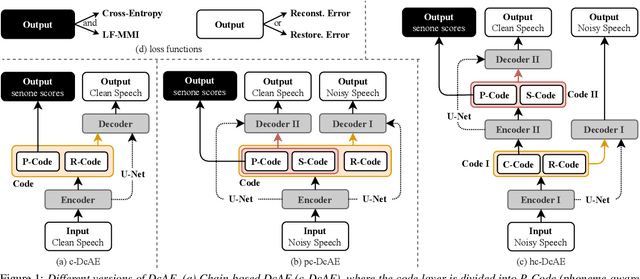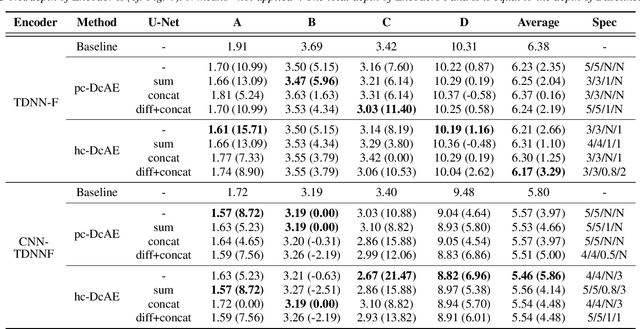Chain-based Discriminative Autoencoders for Speech Recognition
Paper and Code
Mar 28, 2022


In our previous work, we proposed a discriminative autoencoder (DcAE) for speech recognition. DcAE combines two training schemes into one. First, since DcAE aims to learn encoder-decoder mappings, the squared error between the reconstructed speech and the input speech is minimized. Second, in the code layer, frame-based phonetic embeddings are obtained by minimizing the categorical cross-entropy between ground truth labels and predicted triphone-state scores. DcAE is developed based on the Kaldi toolkit by treating various TDNN models as encoders. In this paper, we further propose three new versions of DcAE. First, a new objective function that considers both categorical cross-entropy and mutual information between ground truth and predicted triphone-state sequences is used. The resulting DcAE is called a chain-based DcAE (c-DcAE). For application to robust speech recognition, we further extend c-DcAE to hierarchical and parallel structures, resulting in hc-DcAE and pc-DcAE. In these two models, both the error between the reconstructed noisy speech and the input noisy speech and the error between the enhanced speech and the reference clean speech are taken into the objective function. Experimental results on the WSJ and Aurora-4 corpora show that our DcAE models outperform baseline systems.
 Add to Chrome
Add to Chrome Add to Firefox
Add to Firefox Add to Edge
Add to Edge